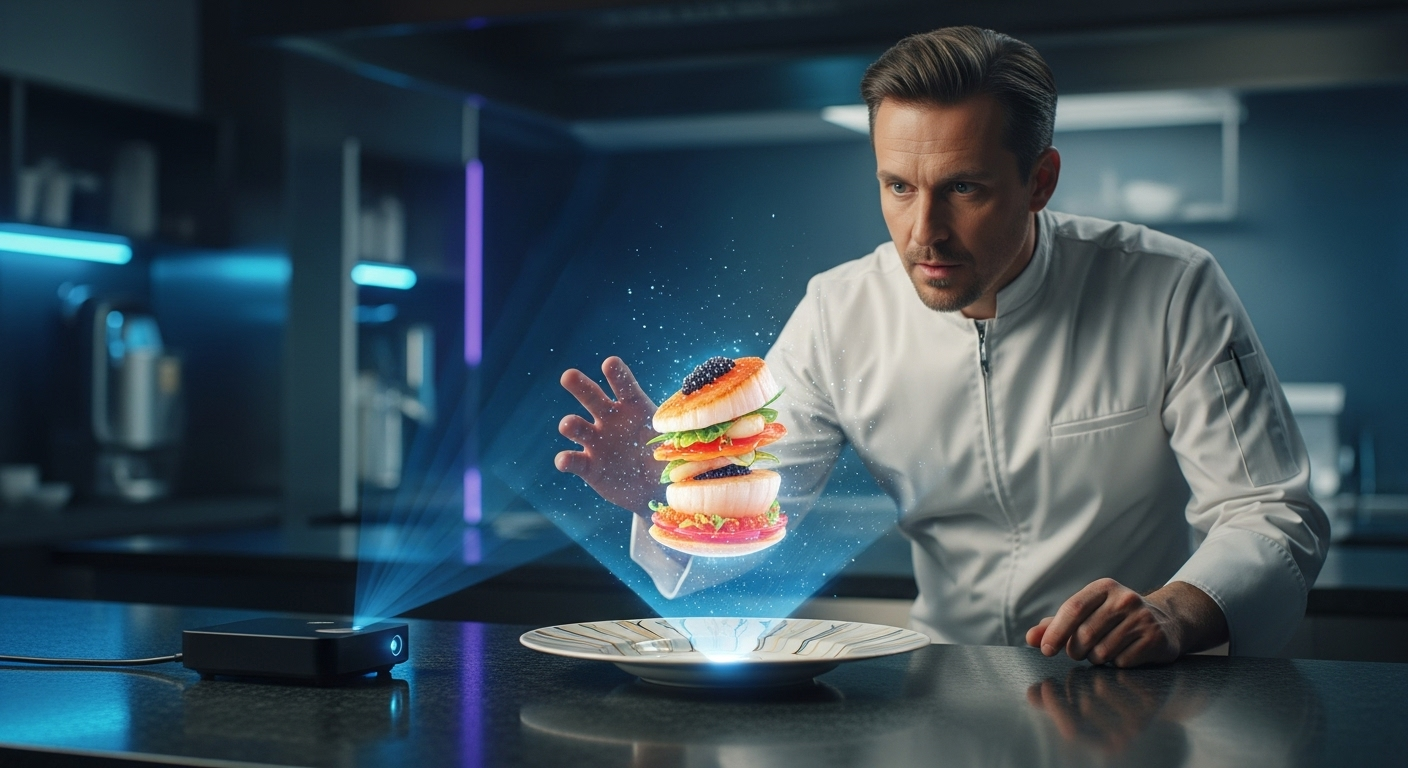Holographic Gastronomy: A Feast for the Senses
The fusion of culinary arts and cutting-edge technology has given birth to a revolutionary dining experience: holographic gastronomy. This avant-garde approach to food presentation marries the skills of master chefs with the wizardry of digital artists, creating immersive meals that tantalize not just the taste buds, but all the senses. As restaurants and event planners worldwide begin to embrace this futuristic concept, diners are finding themselves transported into fantastical realms where food becomes a multidimensional adventure.

Technological Marvels on the Plate
At the heart of holographic gastronomy lies a sophisticated array of technologies. High-definition projectors, motion sensors, and specialized software work in concert to overlay 3D imagery onto carefully crafted dishes. The result is a seamless blend of reality and digital illusion, where a simple white plate can transform into a living, breathing canvas. Some restaurants have even incorporated augmented reality elements, allowing diners to interact with their food in unprecedented ways.
Crafting Narratives Through Food
Beyond mere visual spectacle, holographic gastronomy offers chefs a new medium for storytelling. Each course becomes a chapter in a larger narrative, with themes ranging from historical epochs to fantastical worlds. For instance, a seafood dish might be accompanied by a miniature holographic ocean, complete with schools of fish swimming around the plate. This narrative approach not only enhances the dining experience but also allows for a deeper exploration of culinary concepts and cultural stories.
The Sensory Symphony
While the visual aspect of holographic gastronomy is undoubtedly striking, innovative chefs are finding ways to engage all the senses. Sound design plays a crucial role, with carefully curated audio enhancing the thematic elements of each dish. Some establishments have experimented with scent diffusers to create aromatic atmospheres that complement the visual and gustatory experience. The tactile element is not forgotten either, with textured surfaces and temperature variations adding another layer of sensory engagement.
Challenges and Controversies
As with any emerging art form, holographic gastronomy faces its share of challenges and criticisms. Purists argue that the technology detracts from the essential nature of food, while others raise concerns about the environmental impact of energy-intensive projections. There are also practical considerations, such as the high cost of implementation and the need for specialized staff training. Despite these hurdles, proponents of the technique argue that it represents a natural evolution in the culinary arts, opening new avenues for creativity and expression.
The Future of Dining
As holographic technology continues to advance, the possibilities for culinary applications seem boundless. Some visionaries predict fully immersive dining rooms where every surface becomes a canvas for digital art. Others foresee personalized experiences tailored to individual diners’ preferences and dietary needs. The integration of artificial intelligence could lead to dynamic menus that adapt in real-time to diners’ reactions, creating truly unique gastronomic journeys.
Cultural Impact and Accessibility
Initially confined to high-end establishments and exclusive events, holographic gastronomy is gradually becoming more accessible to the general public. Food festivals and pop-up restaurants are introducing wider audiences to this innovative concept, sparking discussions about the intersection of technology and traditional culinary arts. As the technology becomes more affordable, some predict a democratization of holographic dining, with smaller restaurants and even home cooks adopting simplified versions of the technique.
Conclusion
Holographic gastronomy stands at the forefront of culinary innovation, challenging our perceptions of what a meal can be. By blending the artistry of cooking with the limitless potential of digital technology, it offers a glimpse into the future of dining. As this art form continues to evolve, it promises not just to feed our bodies, but to nourish our imaginations, creating unforgettable experiences that linger long after the last bite has been savored. Whether it becomes a mainstay of fine dining or remains a niche attraction, holographic gastronomy has undoubtedly expanded the boundaries of culinary expression, inviting us to reconsider the very nature of food and its role in our lives.




